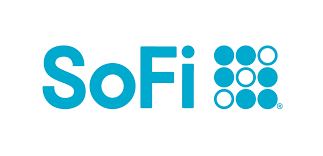Since CD rates are still sitting at above 5%, it’s a great time to put money into one if you have it to spare. And it doesn’t have to be a ton of money, either. Some CDs have a pretty low minimum requirement, like $500, while many have no minimum at all.
When you’re looking for a CD, it’s important to shop around and compare rates across different banks. Why accept 5.05% on your money when another bank might give you 5.10%?
But there’s a lesser-known detail to consider when comparing CD offers. And it’s one you should pay close attention to before you open your next CD.
Dig deeper into how often interest compounds
Compounding is an important financial concept you’re probably familiar with to some degree. It’s the idea of earning interest on top of interest, and it’s a huge factor in building wealth over time.
Our Picks for the Best High-Yield Savings Accounts of 2024
|
SoFi Checking and Savings 
APY up to 4.60%
|
APY up to 4.60%
|
Min. to earn $0 |
|
Citizens Access® Savings 
|
Min. to earn $0.01 |
|
|
American Express® High Yield Savings 
APY 4.25%
|
APY 4.25%
|
Min. to earn $1 |
Let’s say you put $100 into a savings account, and after a year, you’re up $4 in interest earnings. The following year, you can earn interest on $104 instead of just $100. And so forth.
But CDs can differ in how frequently interest is compounded. Some CDs might compound interest every month. Others might do it every quarter. It’s important to have that information, because the more often interest is compounded, the more interest you should be able to earn.
For example, at Capital One, interest on CDs is compounded and credited monthly. So if you open a $1,000 CD there, your first month, you’ll only earn interest on $1,000 — your initial deposit. Your second month, you’ll earn interest on $1,000 plus whatever interest you earned that first month.
To illustrate why the frequency of compounding makes a difference, let’s say you open a 12-month, $10,000 CD at 5%. Here’s the amount of interest you’d earn in the course of a year, based on the frequency at which interest is compounded.
| Frequency of Compounding | Total Interest Earned in 12 Months |
|---|---|
| Annually | $500 |
| Semiannually | $506.25 |
| Quarterly | $509.45 |
| Monthly | $511.62 |
Table by author. Calculation from Calculator.net.
A detail you don’t want to overlook
For most people, the main goal in opening a CD is to earn as much interest as possible. If you didn’t care about interest as much and just needed a home for your money, you’d probably pick a savings account because there’s more flexibility to withdraw your cash.
Because of this, make sure to check how often interest compounds in a given CD before opening one. You can find this information in your CD’s disclosures section, which also gives you details on what sort of penalty you’re looking at for an early withdrawal.
Another trick? Make sure to look at your CD’s APY on top of its interest rate. APY tells a more complete story than interest rates alone, because it reflects the impact of compounding on your earnings.
Of course, one factor to keep in mind is that you may earn more interest in a CD with a higher interest rate and less frequent compounding than one with a lower rate and more frequent compounding. So it’s best to use a tool like the one used for the table above to figure out how much interest you’d earn in total.
However, if you find two CDs paying the same interest rate but one compounds more frequently than the other, then you’ll know to choose the one with the higher APY.
These savings accounts are FDIC insured and could earn you 11x your bank
Many people are missing out on guaranteed returns as their money languishes in a big bank savings account earning next to no interest. Our picks of the best online savings accounts could earn you 11x the national average savings account rate. Click here to uncover the best-in-class accounts that landed a spot on our short list of the best savings accounts for 2024.
